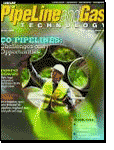Recommended :
 Flare system commonly consists of collection networks, liquid Knock-Out drum, knock-out pump and flare stack with tip. Some flare system may includes liquid seal drum, air ingress & purge reduction seal, flare recovery system, liquid heater and/or vaporiser, etc In recent posting, there are several topics related to Flare have been discussed :
Flare system commonly consists of collection networks, liquid Knock-Out drum, knock-out pump and flare stack with tip. Some flare system may includes liquid seal drum, air ingress & purge reduction seal, flare recovery system, liquid heater and/or vaporiser, etc In recent posting, there are several topics related to Flare have been discussed :- Providing More than One Flare KOD in SERIES
- Elevated Flare (SI Unit) Datasheet
- ANSI/API Std 537 / ISO 25457 2nd edition, Dec 2008 is Released
- Flare Tip Quick Selection Chart
- Flare Smokeless Ringlemann Chart
- Guideline on Quick Determination of Flare Stack Support Type
- Why not bury flare pipe header ?
Mach No.
Mach number is the ratio of fluid flowing velocity to fluid sonic velocity. Mach number equation for a fluid may refer to previous post "...Mach No. & Critical Pressure Calculation". For Pressure Relief Valve tail pipe (pipe immediate downstream of PRV), Mach no is commonly limits to 0.7 whilst for collection header, Mach no limit to 0.5. The flow for calculation for tail pipe and header are subject to PRV type. Read more in "Consider Rated flow or Required Relieving Flow ?".
One shall take note, above are common recommendation and good engineering practice. Some engineers may design flare network to Mach no of 1.0, Several concerns related to flare system design to Mach no of 1 may refer to "Is PSV tail pipe & lateral at CHOKED (Mach no = 1) Accpetable ?".
Momentum (density x velocity2)
Momentum is fluid density time fluid flowing velocity power two. For tail pipe, maximum momemtum may be limited to 150,000 Pa whilst for collection header, limited to 100,000 Pa. The flow for calculation for tail pipe and header are subject to PRV type. Read more in "Consider Rated flow or Required Relieving Flow ?". Above value may be increased (not more than 200,000 Pa) provided that the piping support and vibration analysis are healthy.
Back Pressure
Increase (or reduction) in PRV tail pipe or flare header size may affect Mach no. It also decrease (or increase) back pressure to PRV. A conventional Spring loaded pressure relief valve, maximum allowable back pressure (MABP) is typically limited to 10% of PRV set pressure. A balanced bellow (or piston) type pressure relief valve, MABP is typically limited to 30% -50% of PRV set pressure. For pilot operated PRV, MABP of more than 50% of PRV set pressure may be allowed (some previous experience may reach 80% of set pressure). Above are typical value base on Good Engineering practice. Detail and exact MABP is subject to actual PRV and guaranteed by PRV vendor.
Above are typically related to performance (relief capability) and stability of PRV (as discussed in "Several Impact of Backpressure on Conventional PRV". One shall take note that there is Maximum Allowable Backpressure due to mechanical limitation which subject to temperature. Detail may refer to API Std 526.
When discussed about PRV back pressure, correct definition of "back pressure" shall be used in communicating information to PRV vendor. Discussion on confusion about "back pressure" may refer to "PRD Backpressure".
Noise Level
As fluid passing through the PRV (and tail pipe & header), significant noise would be generated and transmitted along the tail pipe and header. The noise may also emitted to atmosphere. One of the common safety requirement is limit the noise level to 115 dBA (Noise level with A-weighted) during intermittent emergency relief scenario. Besides intermittent relief from PRV, some Pressure control valve (PCV) may discharge (continuous or frequent) fluid into flare network. The noise level may limit to 85 dBA for continuous scenario. One shall remember, this noise level should be the mix of noise from device and back ground noise i.e. pump compressor, etc. Acoustic insulation may be considered to minimise noise emission from PRV, tail pipe and headers.
Two Phase Flow Pattern
During common mode relief scenario i.e. total plant power failure, total cooling water failure, etc may leads to multiple PRVs relieve. JT cooling due to pressure reduction, hot fluid mix with cold fluid and composition change may results two phase flow in the tail pipe and header. The flow pattern of this two phase flow shall be analysed and avoid slugging flow pattern as much as possible. Typically may consider to use Taitel-Dukler map to determin flow pattern. Flare network exposing to two phase flow, piping support designer shall make aware and provide sufficient support for piping with two phase flow. If necessary, may consider additional intermediate knock out drum to remove liquid (as discussed in "Provide More than One Flare KOD in SERIES".
[More disucssion about AIV, FIV, Thermal shock, Slug hammering, etc in "Several Criteria and Constraints for Flare Network - Piping"]
Related Topic
No comments:
Post a Comment